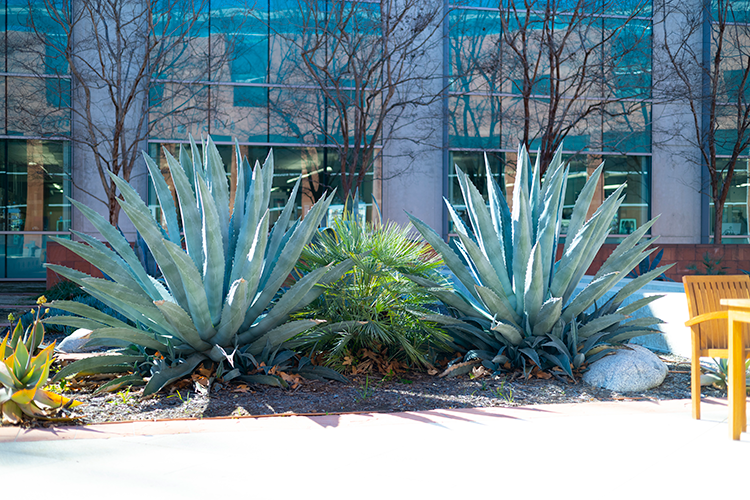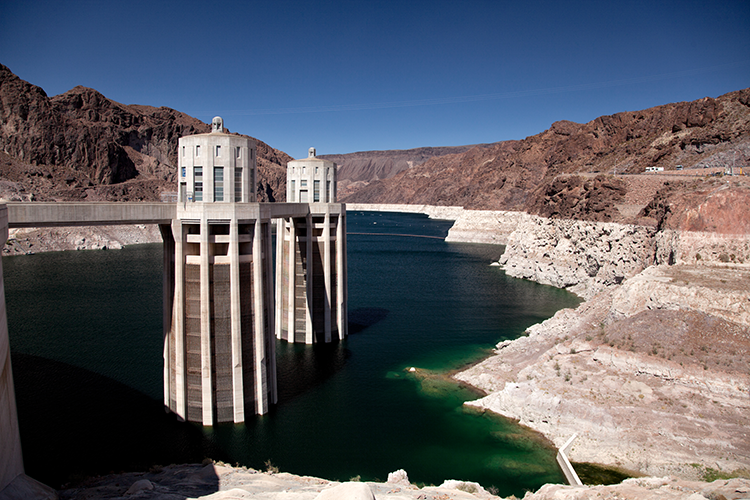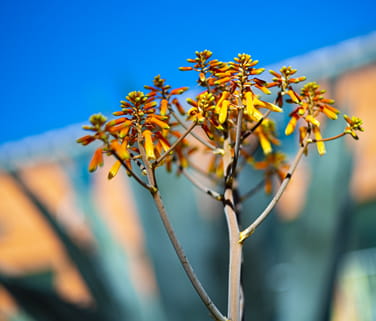His routine remained relatively unchanged: Lace up the jogging shoes, take a few gulps of water and ensure his phone was charged.
David Ladoski would be gone for about 45 minutes during his lunch break. He would stride through Amgen's site in Thousand Oaks, California, where the large independent biotech is headquartered, turn onto the bordering street and walk around the campus. It was his chance to clear his mind of complicated data and focus on the natural world around him. He'd spot hawks gliding silently in the air. On occasion, he'd gaze at the Moon silhouetted against the blue sky.
But last year, on one of his walks, he remembered what he saw when he looked down. And his engineering mind kicked back into gear.
"There was this depression in the ground," Ladoski said. "It wasn't dangerous or huge, but it was pretty noticeable. And I noticed it had eroded the ground beneath the sidewalk."

David Ladoski, am Amgen employee for more than 20 years, saw a leak and reported it quickly. He said it was important to report and every drop saved makes a difference.
Ladoski, who has been with Amgen for more than 20 years, was curious about the cause. He saw a sprinkler head that was broken. He figured it was a leak. A pretty big one, too. "I have an underground sprinkler at my house and my water bill jetted up at one point and, after some digging, found a large leak. I fixed it and my water bill went down again."
He figured Amgen might be in the same situation. When he returned from his walk, he filled out a "SEE Card," which is a mechanism Amgen has in place for staff to identify issues like this. He also notified Scott Sharts, the site manager at Thousand Oaks.
It was fixed almost immediately.
"These are important times and we can't afford to be wasting water, the most precious resource we have," Ladoski said. "I'm glad we are taking steps to try and conserve more water."
Efforts to reduce water conservation at Amgen is nothing new—but a new set of reduction target is on the radar of many employees like Ladoski and those outside the walls of Amgen.

The path at Amgen's Thousand Oaks site, where David Ladoski spotted the leak and reported it.
In fact, the company's push toward environmental, social and governance issues—which includes water conservation—was recognized in February when Amgen was named to Newsweek's list of "America's Most Responsible Companies" for the third consecutive year. It was also named to Barron's list of "America's Most Sustainable Companies" for the second consecutive year. Amgen released its ESG Report in May, which offers a comprehensive look at, among other things related to social responsibility, a summary of sustainability goals set and achieved.
Ambitious Plan
Between 2008 and 2020, Amgen reduced its water consumption by about 30% through a series of efforts that included more drought-friendly landscaping and installing low-flow toilets. Now the plan is to reduce water usage by another 40% by 2027—based off the baseline year of 2019. That targeted outcome—while not a fixed number—aims to see a volume reduction of 227 million gallons, which is roughly the equivalent of 350 Olympic-sized swimming pools.
Darin Kuida, director of EHSS Environmental Compliance, said the goals have come about out of necessity—especially in the case of drought-stricken Southern California.
"It used to be we would experience a drought and the response was 'Oh a drought.' And then the rains would come and the drought would go away," Kuida said. "Now we are experiencing this more frequently and it's becoming a long-term normal. We need to adapt our systems to the long-term, not just the short term."
The push to the ambitious reduction, he said, will take a lot of creative thinking and a team effort. Already, Amgen has put in place an Ambassador Program, where 15 employees—mostly at the executive level—are encouraging their staff at every level to integrate sustainability concepts into their business processes to reduce waste and water usage.
The ambassadors meet and share water data at global sites to find areas where reduction and offsets can occur.
David Seitz, director of engineering and an organizer of the ambassador program, said establishing water baselines are critical to tackling the challenge of water reduction. He also said it will take a series of efforts on both a large and small scale to reach the goal.
"Getting everyone's input and participation is critical," he said. "Getting the small wins can add up along with the big wins will make all the difference."

Amgen's effort to reduce water consumption over the years have included a variety of efforts, including the use of drought tolerant plants such as those featured in front of Building 29 at the company's Thousand Oaks site. Amgen file photo.
The Big Picture
Lack of water access varies around the world, with different countries and regions facing their own set of challenges.
For the Western portion of the United States, drought and water scarcity is the biggest challenge. But it is not the only place. Brazil, where Amgen has a manufacturing site, is suffering through its worst drought in nine decades. And despite having the most freshwater resources on Earth, it has lost more than 15% of its surface water since 1991, according to news reports and a collective of environmental watchdog agencies.
Turkey, which also features an Amgen manufacturing site, has also grappled with drought in recent years.
Amgen is sensitive to the environmental pressures globally. That is why the company has engaged in the global conservation effort tailored to different sites attempting to meet an overall goal.
But Seitz said the Thousand Oaks, California site is the most water-stressed site simply because of its size and location in the midst of longer stretches of dry, drought-like conditions in the American West, though sites in Rhode Island and Puerto Rico are also engaged in efforts to help the company reach water sustainability goals.
Sean Anderson, a professor of environmental science and resource management at California State University Channel Islands, said water has always been a global issue and that water rights and claims have created a patchwork of access problems that have left, according to the United Nations, 2.2 billion people lacking access to safely managed drinking water services.
In Thousand Oaks, Anderson said the evidence of seeing water resources like the Colorado River, Lake Mead and the snowpack in the Sierra Mountains all hitting record lows in recent years require large water users to not only retool their water usage for the environment's sake, but also for the bottom line.
Last year, for the first time in its history, the U.S. Bureau of Reclamation formally declared a water shortage at Lake Mead, which takes in water from the Colorado River. It is at about 40% of capacity, which has triggered stark warnings as the West remains mired in drought. And earlier this year, the journal Nature Climate Change issued a study showing the Western United States and northern Mexico are in the midst of a megadrought—one not seen in 1,200 years.

Lake Mead is at historic water level lows as the West grapples with drought. Photo: Patricia Toth McCormick/Getty Images.
The situation is so dire, water officials this April in Southern California imposed outdoor watering limits to once a week for residents and businesses in an attempt to help offset the excessively dry conditions beginning in June.
"Companies that make these changes now are getting ahead of the looming crisis," he said. "Making the changes now instead of later, when those sensors or tools to reduce water will cost three times as much, is being a responsible player and taking a rational approach to a serious problem."
What's on Tap
Jim Fisher, who heads Global Engineering's Facilities, Utilities, and Sustainability team at Amgen, said the company has identified over 100 projects worth considering; these are being reviewed for viability, including some big projects involving large utility systems such as reverse osmosis skids and cooling towers.
"We are willing to evaluate nearly anything as we look to deploy traditional and novel water conservation technologies and practices," Fisher said.
Amgen completed water studies at each of our major manufacturing sites in 2021 with external consultants to identify additional reduction opportunities. The company also established a cross-functional water sustainability team to share projects and best practices globally. And Amgen invested many hours into engineering design of high impact projects to help ensure our utilities are minimizing water use and beneficially reusing water safely.
Amgen's new facilities in Ohio and North Carolina are also being designed with state-of-the art water efficient equipment to help meet the challenge.
Maritza Shaughnessy, director Environment, Health, Safety and Sustainability, said the SEE Card system, which is in place to report at-risk conditions and behaviors, can be used by staff globally to capture environmental sustainability observations—like when they see leaks or places where water can be saved. It is a critical part toward reaching the company's goal.
Good ideas and observations can come from anywhere and staff are encouraged to do something, if they see something. The cards have been around for 15 years and it was about a decade ago that they added a category where a staff member could report environmental compliance and sustainability observations.
"It's a pivotal system," she said. "We also have to drive the culture and get people thinking about water as part of our overall mission. Our mission is to serve patients, but we have to have water do that in almost every aspect of our processes, from research to manufacturing—water is everything."

Maritza Shaughnessy, director of Environment, Health, Safety and Sustainability at Amgen.
Ladoski said the SEE Card made it easy for him to report the leaks and he said both were fixed promptly.
He said he hopes the company might have people regularly walk the site, checking for leaks as a way to help reach the conservation goals—one step and one drop at a time.



